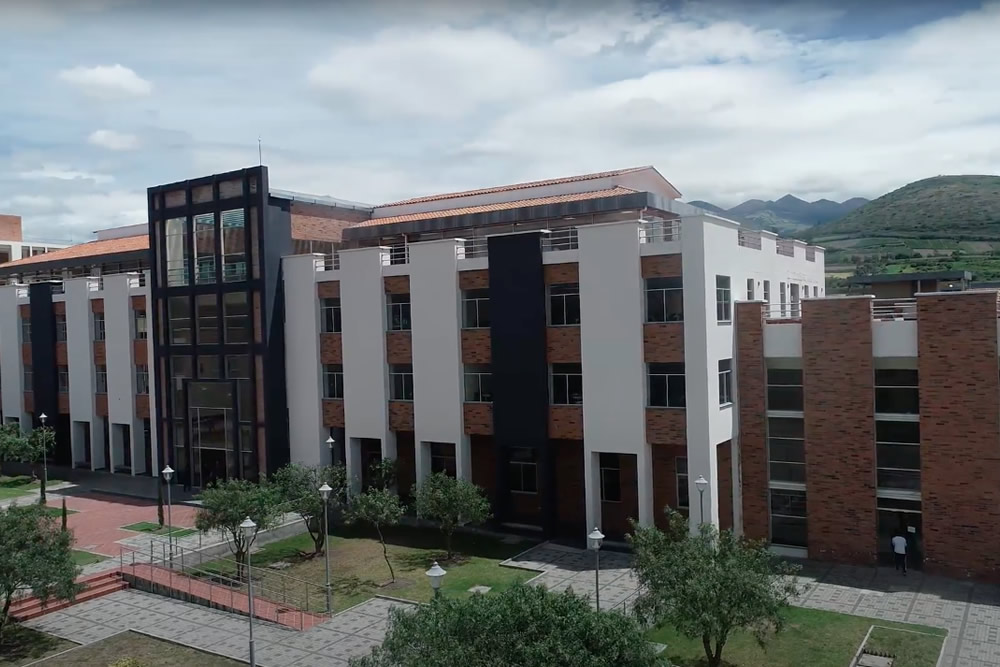Detalles MARC
| 000 -CABECERA |
|---|
| campo de control de longitud fija |
04969cam a22005297a 4500 |
| 999 ## - NÚMEROS DE CONTROL DE SISTEMA (KOHA) |
|---|
| Koha biblionumber |
3108 |
| 001 - NÚMERO DE CONTROL |
|---|
| campo de control |
15003507 |
| 003 - IDENTIFICADOR DEL NÚMERO DE CONTROL |
|---|
| campo de control |
EC-UrYT |
| 005 - FECHA Y HORA DE LA ÚLTIMA TRANSACCIÓN |
|---|
| campo de control |
20200324144407.0 |
| 006 - CÓDIGOS DE INFORMACIÓN DE LONGITUD FIJA--CARACTERÍSTICAS DEL MATERIAL ADICIONAL |
|---|
| campo de control de longitud fija |
s||||gr|||| 00| 00 |
| 008 - DATOS DE LONGITUD FIJA--INFORMACIÓN GENERAL |
|---|
| campo de control de longitud fija |
070912s2008 nyua bf 001 0 eng d |
| 010 ## - NÚMERO DE CONTROL DE LA BIBLIOTECA DEL CONGRESO |
|---|
| Número de control de LC |
2007937164 |
| 020 ## - NÚMERO INTERNACIONAL ESTÁNDAR DEL LIBRO |
|---|
| Número Internacional Estándar del Libro |
9780387499871 |
| 020 ## - NÚMERO INTERNACIONAL ESTÁNDAR DEL LIBRO |
|---|
| Número Internacional Estándar del Libro |
9780387499895 |
| 020 ## - NÚMERO INTERNACIONAL ESTÁNDAR DEL LIBRO |
|---|
| Número Internacional Estándar del Libro |
0387499873 |
| 035 ## - NÚMERO DE CONTROL DEL SISTEMA |
|---|
| Número de control de sistema |
(OCoLC)ocn166358169 |
| 040 ## - FUENTE DE LA CATALOGACIÓN |
|---|
| Centro catalogador/agencia de origen |
BTCTA |
| Centro/agencia transcriptor |
BTCTA |
| Centro/agencia modificador |
YDXCP |
| -- |
BAKER |
| -- |
ORU |
| -- |
DLC |
| -- |
EC-UrYT |
| 041 ## - CÓDIGO DE LENGUA |
|---|
| Código de lengua del texto/banda sonora o título independiente |
eng |
| 042 ## - CÓDIGO DE AUTENTICACIÓN |
|---|
| Código de autenticación |
lccopycat |
| 050 00 - SIGNATURA TOPOGRÁFICA DE LA BIBLIOTECA DEL CONGRESO |
|---|
| Número de clasificación |
QC454.M6 |
| Número de documento/Ítem |
H36 2008 |
| 082 04 - NÚMERO DE LA CLASIFICACIÓN DECIMAL DEWEY |
|---|
| Número de clasificación |
543.54 |
| Número de edición |
23 |
| 245 00 - MENCIÓN DE TÍTULO |
|---|
| Título |
Handbook of molecular force spectroscopy : |
| Mención de responsabilidad, etc. |
edited by Aleksandr Noy / |
| 250 ## - MENCIÓN DE EDICIÓN |
|---|
| Mención de edición |
First edition |
| 264 34 - Producción, publicación, distribución, fabricación y copyright |
|---|
| Lugar de producción, publicación, distribución, fabricación |
New York, NY : |
| Nombre del de productor, editor, distribuidor, fabricante |
Springer, |
| Fecha de de producción, publicación, distribución, fabricación o copyright |
2008. |
| 300 ## - DESCRIPCIÓN FÍSICA |
|---|
| Extensión |
xii, 291 pages : |
| Otras características físicas |
illustrations ; |
| Dimensiones |
26 cm. |
| 504 ## - NOTA DE BIBLIOGRAFÍA, ETC. |
|---|
| Bibliografía, etc. |
Includes bibliographical references and index. |
| 505 2# - NOTA DE CONTENIDO CON FORMATO |
|---|
| Nota de contenido con formato |
Surface force apparatus measurements of molecualr forces in biological adhesion -- Force spectroscopy with optical and magnetic tweezers -- Chemical force microscopy nanoscale probing of fundamental chemical interactions -- Chemical force microscopy: force spectroscopy and imaging of complex interactions in molecular assemblies -- Dynamic force spectroscopy with the atomic force microscope -- Simulation in force spectroscopy -- Tip functionalization: applications to chemical force spectroscopy -- The dynamical response of proteins under force -- Counting and breaking single bonds: dynamic force spectroscopy in tethered single molecule systems -- Direct mapping of intermolecular interaction potentials. |
| 520 3# - SUMARIO, ETC. |
|---|
| Sumario, etc. |
Modern materials science and biophysics has increasingly focused on studying and controlling intermolecular interactions on the single-molecule level. The peer-reviewed literature contains an increasing number of studies that either measure the interaction forces directly or use mechanical forces to deform the molecules or trigger structural transitions. Molecular force spectroscopy is the result of unprecedented advances in the capabilities of modern force measurement instruments in the past decade and describes a number of techniques that use mechanical force measurements to study interactions between single molecules and molecular assemblies in chemical and biological systems. Examples of these techniques include atomic force microscopy, optical tweezers, surface forces apparatus, and magnetic tweezers. These techniques typically target a specific range of experimental systems and geometries, but all use mechanical force transducers to apply and detect nanonewton range forces between single molecules in condensed phases. Molecular force spectroscopy measurements have been very important for studies of adhesion and friction forces, where they provided the first truly nanoscale capabilities. Force spectroscopy has been instrumental in understanding mechanical properties and nanoscale dynamics of polymer systems from elasticity to nanoscale phase segregation. In biophysics, applications range from probing protein folding to direct mapping of intermolecular interaction potentials. This volume presents a review of modern force spectroscopy, including fundamentals of intermolecular forces, technical aspects of the force measurements, and practical applications. The Handbook begins with a review of fundamental physics of loading single and multiple chemical bonds on the nanometer scale with a discussion of thermodynamic and kinetic models of binding forces and dissipation effects in nanoscale molecular contacts, covers practical aspects of modern single-molecule level techniques, and concludes with applications of force spectroscopy to chemical and biological processes. Computer modeling of force spectroscopy experiments is addressed as well. In sum, Handbook of Molecular Force Spectroscopy is a comprehensive, authoritative guide to planning, understanding, and analyzing modern molecular force spectroscopy experiments with an emphasis on biophysical research. |
| 650 24 - PUNTO DE ACCESO ADICIONAL DE MATERIA--TÉRMINO DE MATERIA |
|---|
| Término de materia o nombre geográfico como elemento inicial |
Molecular spectroscopy |
| Subdivisión de forma |
Handbooks, manuals, etc. |
| 9 (RLIN) |
7356 |
| 650 24 - PUNTO DE ACCESO ADICIONAL DE MATERIA--TÉRMINO DE MATERIA |
|---|
| Término de materia o nombre geográfico como elemento inicial |
Atomic force microscopy |
| 9 (RLIN) |
7357 |
| 650 24 - PUNTO DE ACCESO ADICIONAL DE MATERIA--TÉRMINO DE MATERIA |
|---|
| Término de materia o nombre geográfico como elemento inicial |
Nanotechnology |
| 9 (RLIN) |
380 |
| 650 24 - PUNTO DE ACCESO ADICIONAL DE MATERIA--TÉRMINO DE MATERIA |
|---|
| Término de materia o nombre geográfico como elemento inicial |
Polymers |
| 9 (RLIN) |
62 |
| 650 24 - PUNTO DE ACCESO ADICIONAL DE MATERIA--TÉRMINO DE MATERIA |
|---|
| Término de materia o nombre geográfico como elemento inicial |
Espectroscopía molecular |
| Subdivisión de forma |
Manuales, etc. |
| 9 (RLIN) |
7358 |
| 650 24 - PUNTO DE ACCESO ADICIONAL DE MATERIA--TÉRMINO DE MATERIA |
|---|
| Término de materia o nombre geográfico como elemento inicial |
Fuerza atómica microscópica |
| 9 (RLIN) |
7359 |
| 650 24 - PUNTO DE ACCESO ADICIONAL DE MATERIA--TÉRMINO DE MATERIA |
|---|
| Término de materia o nombre geográfico como elemento inicial |
Nanotecnología |
| 9 (RLIN) |
2091 |
| 650 24 - PUNTO DE ACCESO ADICIONAL DE MATERIA--TÉRMINO DE MATERIA |
|---|
| Término de materia o nombre geográfico como elemento inicial |
Polímeros |
| 9 (RLIN) |
2774 |
| 700 1# - PUNTO DE ACCESO ADICIONAL--NOMBRE DE PERSONA |
|---|
| Nombre de persona |
Noy, Aleksandr |
| 9 (RLIN) |
7360 |
| Término indicativo de función/relación |
editor |
| 856 42 - LOCALIZACIÓN Y ACCESO ELECTRÓNICOS |
|---|
| Especificación de materiales |
Publisher description |
| Identificador Uniforme del Recurso |
<a href="http://www.loc.gov/catdir/enhancements/fy0823/2007937164-d.html">http://www.loc.gov/catdir/enhancements/fy0823/2007937164-d.html</a> |
| 856 41 - LOCALIZACIÓN Y ACCESO ELECTRÓNICOS |
|---|
| Especificación de materiales |
Table of contents only |
| Identificador Uniforme del Recurso |
<a href="http://www.loc.gov/catdir/enhancements/fy0823/2007937164-t.html">http://www.loc.gov/catdir/enhancements/fy0823/2007937164-t.html</a> |
| 906 ## - ELEMENTOS DE DATOS F LOCAL, LDF (RLIN) |
|---|
| a |
7 |
| b |
cbc |
| c |
copycat |
| d |
2 |
| e |
ncip |
| f |
20 |
| g |
y-gencatlg |
| 942 ## - ELEMENTOS DE PUNTO DE ACCESO ADICIONAL (KOHA) |
|---|
| Fuente del sistema de clasificación o colocación |
Clasificación Decimal Dewey |
| Tipo de ítem Koha |
Colección general |
| 955 ## - INFORMACIÓN NIVEL-COPIA (RLIN) |
|---|
| Classification number, CCAL (RLIN) |
jx09 2008-02-12 z-processor |
| Estado de la copia, CST (RLIN) |
jx47 2008-02-20 |
| 955 ## - INFORMACIÓN NIVEL-COPIA (RLIN) |
|---|
| Classification number, CCAL (RLIN) |
pc17 2007-09-12; |
| -- |
pv14 2008-01-31 to ASCD |
| -- |
jp00 2008-02-06 |
| -- |
aa05 2008-04-16 |



